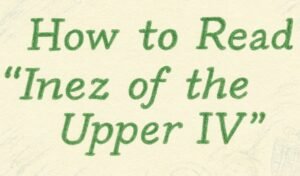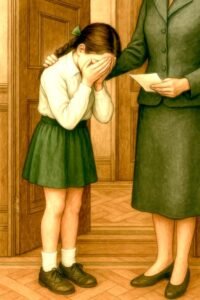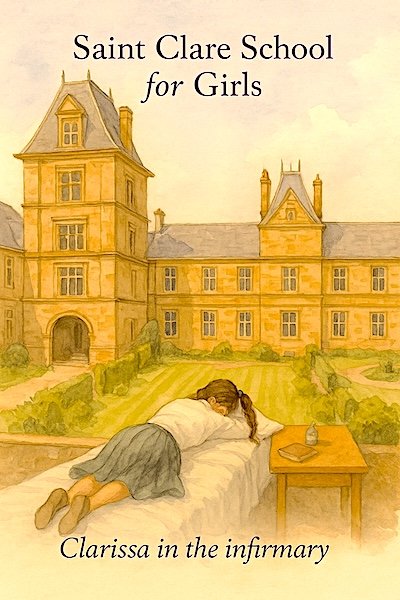0 comment(s) so far. Please add yours!
 “The MP Visits Saint Clare” continues
“The MP Visits Saint Clare” continues
Earlier instalments:
- Prologue – 11 July 1955
- Part I – 8 – 12 July 1955
- Part II – 12 July 1955 (earlier)
- Part III – 12 July 1955
- Part IV – 12 July 1955
Further particulars may be found in the Foreword below.
This sequence draws from the Charrington Papers and the less officious corners of Saint Clare’s—those neat staff reports never meant to withstand scrutiny; the household logs written with a pointed, domestic hauteur; and the diaries, margins, and illicit notes in which the girls record rather more than their elders imagine. Some documents are respectably typed. Others arrive in the swift, unsteady cursive of someone writing under pressure, or in a place she very much oughtn’t be.
Readers are invited to take up the archivist’s task, and the investigator’s pleasure, of weighing the School’s polished accounts against the smudged, contradictory recollections of those who actually lived the day. Much will be implied. Little will be stated outright. And attentive readers may notice that Miss Gladys Williams’s file, though she left Saint Clare more than five years ago, has begun to grow again—curiously, and on no official authority whatsoever.
The archive remembers. And so, of course, does Inez.
Comments are warmly welcomed. While I enjoy seeing them on Bluesky and Twitter, those left here become part of the archive proper, where they may—quietly—shape what follows.
Saint Clare November: 42,924 / 50,000 words
Foreword
From the Archivist
Having concluded Miss Kelley’s contribution to the Charrington Papers—written, as ever, from a strategically advantageous desk—we proceed to the next document set, in which Saint Clare’s own medical wing weighs in.
Clarissa Charrington’s transfer to the infirmary on the evening of 12 July was recorded with the calm efficiency peculiar to boarding school matrons, who tend to regard tears as symptoms, disobedience as diagnosis, and cod-liver oil as cure. Matron Whitlock’s notes provide the official version: measured, sensible, and serenely unconcerned with the child’s sense of dignity.
Clarissa’s corresponding diary entry presents something rather different: a young heroine stunned by shock, shame, and a games skirt that suddenly felt two inches too short for public consumption.
Between the two, the reader may triangulate something like truth.
CLARISSA CHARRINGTON – DIARY
Entry 1 – In the Headmaster’s Study
12 July 1955 – Afternoon
It happened. It truly happened. I keep writing the words to make them real, but my hands won’t stop shaking. Papa asked Mr Lewis for the room, and then for me, and he was perfectly calm – horribly calm, the kind of calm that means there is no escape. I thought I knew what it would feel like, being in trouble with Papa, but it is worse when he doesn’t even raise his voice. Worse than shouting. Worse than anything.
I was marched in still in my games kit, looking a fright. I had grass on my socks and my blouse wasn’t properly tucked in, and all I could think was that if I’d known he was coming, I would at least have changed. But I didn’t know. No one warned me. Georgie Fairfax only said the Head wanted me at once. (more…)



 Based on
Based on